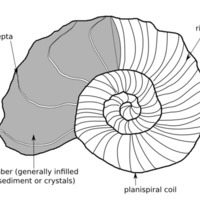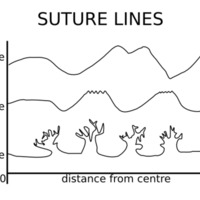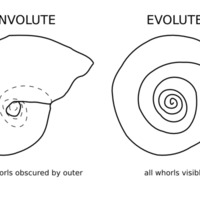- Home
- Rocks
- Type fossils
- Fossil Specimens
- Minerals
- Glossary
- Stratigraphic Chart
- Michel-Levy Chart
- Classification of igneous rocks
- University of Cambridge
- Department of Earth Sciences
- ESC Library
- Moodle
- Sedgwick Museum
- DoITPoMS
- Mindat.org
- Microfossils
- Bryozoans
- Webmineral
- Tree of Life
- CrystalMaker
- Virtual Microscope
Ammonoid
Taxonomy
Phylum: Mollusca
Class: Cephalopoda
Subclass: Ammonoidea
Diagnostic features
[See labelled diagram above, left]
Aragonite shell
Septa
Suture (different for goniatites, ceratites and ammonites, see diagram above, centre)
Chambers
Siphuncle
Planispiral shape, involute or evolute (see diagram above, right)
Stratigraphic range
Devonian to Cretaceous
Way of life
Nektonic (jet propelled)
Predatory
Marine
Common preservation
Advanced notes
Ammonoids could passively remove or add water to chambers via the siphuncle. This allowed them to change their density, and maintain neutral buoyancy with the surrounding seawater. This meant that they were able to swim as efficiently as possible.
Ammonoids are extremely good index fossils on account of their diverse morphologies, good preservation potentials and widespread fossil locations.



